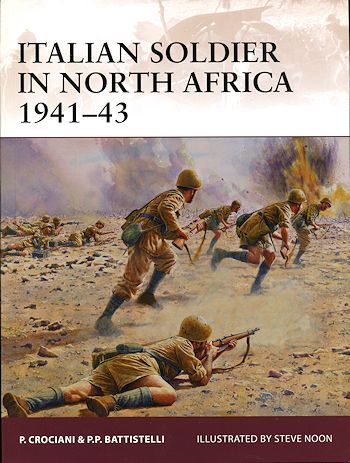 Much of
history considers the Italian military of WWII to be very much a second-rate
fighting force. I know that much of what I grew up reading treated the Italian
Army as being good for little more than back-water theaters of operation. Like
most generalities, it is not entirely true and yet, there is some truth to the
commentaries. The world is not black and white but an infinite variety of shades
of grey and it is when we think in absolutes that we run the risk of not fully
understanding things and situations.
Much of
history considers the Italian military of WWII to be very much a second-rate
fighting force. I know that much of what I grew up reading treated the Italian
Army as being good for little more than back-water theaters of operation. Like
most generalities, it is not entirely true and yet, there is some truth to the
commentaries. The world is not black and white but an infinite variety of shades
of grey and it is when we think in absolutes that we run the risk of not fully
understanding things and situations.
So it is with the Italians in North Africa during WWII. Few take the
time to realize that in the 1930s, the Italian military was basically quite
small, with the Army being geared towards being a colonial army. This basically
means they were trained to take care of minor skirmishes with local insurgents
and not a major European power. When Mussolini came into power, though he made
efforts to enlarge and modernize the Italian Military, it was still not enough.
Italian weapons were adequate, but did not keep up with what was
being produced by others. Often their weapons were either of insufficient power
or were complex and somewhat unreliable. The same can be said for the training
that Italian soldiers received. This was insufficient, somewhat outdated, and
not up to the standards of other European nations like the UK or Germany. Then
there was a huge rift between the officers and other soldiers. Officers
generally felt they were privileged and rarely considered their troops to be
more than simple pawns that were expendable and quickly replaced. They were
often more interested in their own status than in the effectiveness of the
troops under their command. This was rife up and down the chain of command. Of
course, there were exceptions and there were well run units, but many Italian
divisions and regiments had poor training, inadequate weapons and poor morale.
All of this was exacerbated by poor mail service, inadequate food and water,
severe lack of motor transport, and the knowledge that unless they were badly
wounded, they were in action until killed or captured.
Having said all this, some units were well led, had good equipment
and high morale. These units performed as well as any they opposed and often
better than some. But they were the exceptions rather than the rule.
In this book, the authors take a look at the build up of the Italian
Army, the way men were recruited (or snagged for military service), they way
they were trained, how they felt about being in the Army and the sorts of
weapons and uniforms they wore. Also as a standard part of this series, we see
what it was like to be on campaign, how they got along with each other and how
well they fought. Several battles are chosen to show how well these units fought
as well as what the results of their efforts were.
In all, it makes for a very interesting read about a subject that few
enthusiasts truly consider and I'm sure it will change a few impressions during
the course of the book. A book I can easily recommend to you.
January 2014
For more on the complete line of Osprey books,
visit www.ospreypublishing.com
or contact them at Osprey Direct, PO Box 140, Wellingborough, Northants,
NN8 2FA, UK. In the US, it is
Osprey Direct at 443 Park Avenue South, New York, NY 10016, where you can
get a catalogue of available books.
If you would like your product reviewed fairly and quickly, please
contact
me or see other details in the Note to
Contributors.
 Much of
history considers the Italian military of WWII to be very much a second-rate
fighting force. I know that much of what I grew up reading treated the Italian
Army as being good for little more than back-water theaters of operation. Like
most generalities, it is not entirely true and yet, there is some truth to the
commentaries. The world is not black and white but an infinite variety of shades
of grey and it is when we think in absolutes that we run the risk of not fully
understanding things and situations.
Much of
history considers the Italian military of WWII to be very much a second-rate
fighting force. I know that much of what I grew up reading treated the Italian
Army as being good for little more than back-water theaters of operation. Like
most generalities, it is not entirely true and yet, there is some truth to the
commentaries. The world is not black and white but an infinite variety of shades
of grey and it is when we think in absolutes that we run the risk of not fully
understanding things and situations.